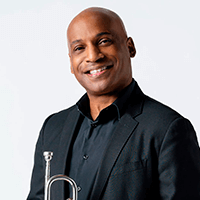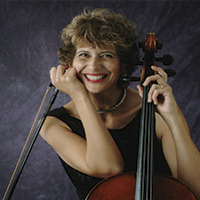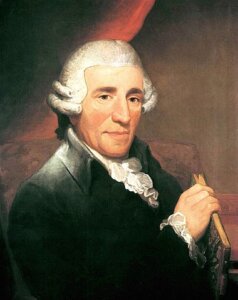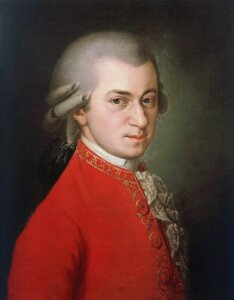Events

Classic Series
American Veteran: A Story Without Words
Saturday
Nov 12, 2022
7:30PM
Alberta Bair Theater
2801 Third Ave. N.
$15 - $66
Katharina Wincor | guest conductor
Tage Larsen | trumpet
Franz Joseph Haydn | Trumpet Concerto
Ilse-Mari Lee & Marcus “Doc” Cravens | American Veteran: A Story Without Words (world premiere)
Wolfgang Amadeus Mozart | Symphony No. 40
Chicago Symphony trumpeter Tage Larsen joins the Billings Symphony for Haydn’s Trumpet Concerto and the world premiere of American Veteran: A Story Without Words, a collaboration between Montana composer Ilse-Mari Lee and photographer Doc Cravens to celebrate Montana’s veterans. The program closes with Mozart’s Symphony No. 40, which tempers the composer’s exuberance with a touch of melancholy.
Tickets are offered to active duty military and veterans at a 20% discount. Contact the ABT Box Office directly at (406) 256-6052 to purchase discounted tickets.
American Veteran:
A Story Without Words
SATURDAY, NOVEMBER 12, 2022 | 7:30PM
ALBERTA BAIR THEATER
Katharina Wincor, guest conductor
Tage Larsen, trumpet
Symphony in D Major
Wolfgang Amadeus Mozart (1756–1791)
Allegro molto
Andantino grazioso
Allegro
Trumpet Concerto
Joseph Haydn (1732–1809)
Allegro
Andante
Finale: Allegro
Tage Larsen, trumpet
American Veteran: A Story Without Words
Ilse-Mari Lee (1962– )
Tage Larsen, trumpet
Marcus “Doc” Cravens, photography
World premiere
Intermission
Symphony No. 40
Wolfgang Amadeus Mozart (1756–1791)
Molto allegro
Andante cantabile
Allegretto
Molto allegro
 KATHARINA WINCOR | GUEST CONDUCTOR
KATHARINA WINCOR | GUEST CONDUCTOR
A rising, charismatic talent, Austrian conductor Katharina Wincor made a critically acclaimed Dallas Symphony Orchestra subscription debut in 2021, performing works by Mendelssohn, Schubert, and Anna Clyne, followed by appearances at the Grafenegg and Gstaad festivals. Recent and upcoming highlights include debuts and return invitations with the Cincinnati Symphony, Salzburg Festival, Brevard Music Center Summer Festival, Deutsches Symphony Orchestra Berlin, Seattle Symphony, Detroit Symphony, Phoenix Symphony, and OFUNAM Mexico, amongst others. Wincor will serve as the chorus master for two performances of Beethoven’s Missa Solemnis with the orchestra of the Opéra de Rouen Normandie in March of 2022.
She was one of just four conductors invited by Iván Fischer to a masterclass with the Royal Concertgebouw Orchestra and was subsequently engaged as his assistant conductor for special projects with the Budapest Festival Orchestra. Katharina began studying conducting at the University of Music and Performing Arts in Vienna. In 2018 she continued her studies at Zurich University, where she studied in the class of Johannes Schlaefli. At the 2017 Gstaad Menuhin Festival, Katharina received the prestigious Neeme Järvi Prize and was awarded third prize at the 2020 Mahler Competition.
 TAGE LARSEN | TRUMPET
TAGE LARSEN | TRUMPET
Tage Larsen holds a degree in music performance from Michigan State University School of Music and a Master of Music in performance from the University of Rochester’s The Eastman School of Music. While at The Eastman School, Larsen toured the country with the Dallas Brass quintet, making appearances, performing, and providing youth clinics to support young musicians.
Larsen’s career is rich with milestones, and he served as solo cornet with the “President’s Own” U.S. Marine Band, in Washington, D.C., the principal trumpet with the Annapolis Symphony Orchestra, second trumpet for the Saint Louis Symphony Orchestra, and in 2002, Larsen was the first African American hired in the history of the Chicago Symphony Orchestra where he has served as fourth/utility trumpet of the orchestra’s brass section.
In 2004, Larsen received the first Michigan State University College of Music Distinguished Alumni Award. He joined the faculty at DePaul University School of Music, in Chicago, Illinois in 2007, as an instructor in applied and performance trumpet. Larsen conducts master classes, has performed at conferences hosted by the International Trumpet Guild (ITG), and also served on the faculty at Roosevelt University’s Chicago College of Performing Arts.
 MARCUS “DOC” CRAVENS | PHOTOGRAPHER
MARCUS “DOC” CRAVENS | PHOTOGRAPHER
Marcus Cravens, or simply Doc, is a photographic storyteller who evokes emotion and inspires others to ask questions about the world around them. With a Bachelor of Art in Photography from Montana State University (Bozeman), Doc has developed a style that mixes photojournalism and conceptual art. His understanding of the world around him is because of his roles as a firefighter in Alaska, a missionary to third world countries, and his military service during a time of war.
Doc has witnessed some of the best parts of humanity, but also the very dark aspects that should never have been seen. Out of those experiences, he still believes that life has a story to be told, even if the narrative shows the good, bad, the beautiful, and the ugly. Some of those stories can be seen in his work with Warriors and Quiet Waters, an organization that helps veterans and their families rekindle their love for the outdoors through fly fishing in Montana. Tonight’s story, American Veteran: A Story Without Words, is a simple, yet complex photographic essay which allows the eyes of over 100 Montana veterans to tell their story. New stories are still being captured around the state of Montana.
 ILSE-MARI LEE | COMPOSER
ILSE-MARI LEE | COMPOSER
Dr. Ilse-Mari Lee joined Montana State University (Bozeman) in the fall of 1989 and currently serves as Dean of the Honors College. She holds a doctorate in Cello Performance and Pedagogy from the University of Arizona, as well as master’s degrees in Cello Performance, Music Theory and Composition from Northern Illinois University.
Dr. Lee is active as a concerto soloist, recitalist, and chamber musician, and performs regularly at the Grand Teton Music Festival in Jackson Hole, Wyoming. In 1992, she premiered the Cello Concerto, Opus 55, by Eric Funk. Collaborative efforts include performances with the Moscow, Muir and Fry Street string quartets, and CD releases with classical guitarist Stuart Weber, pianist Michele Levin, and the Muir Quartet.
As a composer, Dr. Lee’s compositions include works for orchestra, choir, chamber music ensembles and award-winning film scores. Her most recent work, Unearthed for solo cello and digital sound, premiered at Tippet Rise in October 2018. She premiered her cello concerto, Mandela, with the Billings Symphony in 2002, and her tone poem, The Yellowstone Suite, appeared on last October’s Buffalo Crossing concert.
PROGRAM NOTES
 Ilse-Mari Lee (1962– )
Ilse-Mari Lee (1962– )
American Veteran: A Story Without Words
From the composer: “The pandemic and uncertainty of current world events has opened our eyes to a deep societal need for human connection and hope. A need for service through empathy and passion for the greater good of humanity.
“Through a collaborative series of musical compositions and a photographic essay, we are striving to honor the dedication and service of our veterans to the communities, our nation, and the world. American Veteran: A Story Without Words originated as a photographic essay to encourage new bonds between veterans and their communities without the distractions of words while evoking emotions of pride and gratitude. This collaboration is the first of a series with a focus on honoring the Billings veterans and expanding across Montana and further. Additional focus of service in the areas of healthcare workers, teachers, first responders, and more will follow over the coming years.
“An original composition for the Billings Symphony Orchestra, American Veteran features black and white images of Billings veterans photographed by Marcus “Doc” Cravens, a veteran who has devoted his life’s work to photographing American veterans and documenting their lived experiences. The projected images are accompanied by a performance of my original score for strings and solo trumpet, inspired by the valor and service of our veterans.”
Wolfgang Amadeus Mozart (1756–1791)
Symphony in D Major
Although Mozart’s genius found fruition in almost every musical form of his time, he was essentially an operatic composer at heart. “Do not forget how much I desire to compose operas,” he wrote his father in 1778. “I envy anyone who is composing one. I could weep for vexation when I hear or see an aria.”
Just a few years earlier, an 18-year-old Mozart composed his eighth lyric work, La Finta Giardiniera (The Pretend Garden Girl), on a commission by Maximilian III for the 1775 Munich Carnival. Enthusiastically received by audiences, the comic opera—the composer’s second—was panned by critics, largely for its rather awkward libretto attributed to Giuseppe Petrosselini. La finta marks the emergence of Mozart’s mature style, giving us a look at the humanity and humor he would continue to bring to his characters.
Within a year of the opera’s short run, Mozart combined the first two movements of the overture with a third movement in the style of a rustic dance to form the Symphony in D major.
Symphony No. 40
Mozart composed his last three symphonies in the summer of 1788. He finished No. 39 on June 26, then paused to write some piano music and chamber works. The next symphony, tonight’s No. 40, was completed on July 25, and on August 10, came No. 41.
For many years it was thought that these works were composed without any definite performance in mind, but scholars now feel that would have been extremely out of character for Mozart. It is more likely that the planned performances either never materialized or that records of them have been lost. Symphony No. 40 did receive a performance in 1791, at which time Mozart added a pair of clarinets to the orchestra, revising the oboe parts to accommodate the newcomers. This second version—performed tonight—is almost always performed today, but as late as the 1890s, the original was commonly performed.
The key of G minor expressed for Mozart grief and pathos. Many have found these qualities in Symphony No. 40, but others see the work differently. Schumann found “Grecian lightness and grace,” while Wagner described it as “exuberant with rapture.” Berlioz wrote of the symphony’s “grace, delicacy, melodic charm, and fineness of workmanship.” Certainly it does not have the heart-on-sleeve emotionalism that would be recognizable to these Romantic era composers. Nevertheless, in an 18th-century context, the symphony does have an undercurrent of darkness, particularly in its insistence on the minor mode and its chromaticism.
The above notes were written by former librarian Jeffrey M. Edgmond for the Billings Symphony’s first and only performance (until now) of Mozart’s penultimate symphony on April 20, 2002, under the baton of Maestro Uri Barnea.
 Joseph Haydn (1732–1809)
Joseph Haydn (1732–1809)
Trumpet Concerto
British musicologist Alec Hyatt King once remarked that Haydn as a composer of concertos “falls far short of the stature he attained in his symphonies and quartets. The primary reason for this lies in the fact that neither by training nor by temperament had Haydn much of the virtuoso in him.” Of the more than forty concertos for various instruments attributed to Haydn, many have been lost and many others are now considered to be unauthentic. Most of those remaining are thought to have been composed for members of the Esterhazy court orchestra during his long tenure as Kapellmeister to that family.
An exception is the Trumpet Concerto, composed in 1796, just after the composer’s return from his second visit to London. It would be his last orchestral work—the remainder of his career being devoted largely to choral works and chamber music.
Haydn wrote the concerto for Anton Weidinger, a member of the Imperial Court Orchestra in Vienna. By the end of the 18th Century, the upper-register technique of the Baroque trumpeters had all but disappeared, and orchestra trumpet parts were mainly limited to the bugle-call notes available in the middle range of the instrument. Weidinger attempted to solve this problem by adding keys to the trumpet, similar to those used on woodwind instruments. These enabled him to play all the notes of the chromatic scale, but also caused the loss of some of the trumpet’s characteristic brightness. (This timbre would be restored about 25 years later with the invention of the valved trumpet which is still used today.)
The opportunity to write for Weidinger’s experimental instrument inspired Haydn to compose what is arguably his finest concerto. The orchestral introduction of the first movement begins softly, announcing the themes which are later restated and elaborated by the soloist. The second movement is a gentle song which exploits the keyed trumpet’s ability to play chromatic tones—quite startling to the audiences of the time. The lighthearted finale again begins softly in the orchestra, all the better to contrast with the brilliance of the solo instrument.Haydn’s finest concerto has appeared on three Billings Symphony programs: October, 1972, with Martin Berinbaum; November, 1989, with Allen Vizzutti; and, most recently, March, 2017, with Rex Richardson. The above notes are adapted from former librarian Jeffrey W. Edgmond’s notes for the 1989 performance.
